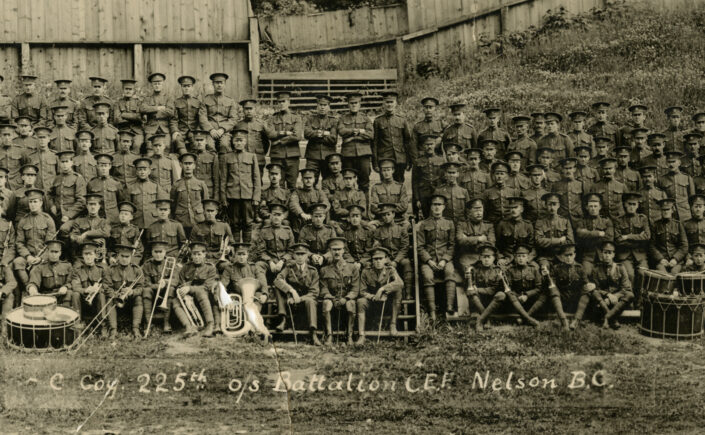The declaration of World War I in August of 1914 shook the orcharding communities as men were forced to abandon their fruit trees in the name of patriotic duty. The call to arms often left women to run the orchards, and many did so successfully despite the shortage of workers. Nevertheless, they turned to the help of Doukhobor and Indigenous women when there was too much work for them alone.
Gerda Kemball recalls what it was like to be left with her mother and sister to run their orchard when her father, Arnold Kemball, left for World War I. Read more about Arnold Kemball’s life as a valiant soldier and pioneer fruit rancher.
Mother, Dorothy and I were left to maintain the fruit ranch with whatever casual help might be available… Carry on we did, determined to develop an orchard that father would be proud to return to. I must pay tribute to the tremendous help which we received at this time from the neighbouring Doukhobor women. In all the years during which mother was left to manage the ranch on her own, we found these Doukhobor women to be honest, faithful and diligent employees. 26
Fruit prices were generally stable during World War I. Since Ontario and Nova Scotia were “shipping their fruit to Great Britain,” the orchardists in the West Kootenays managed to sell their fruit on the coveted Prairie market. 27
26. Affleck, Kootenay Lake Chronicles, 157
27. Lang, Lost Orchards, 91
